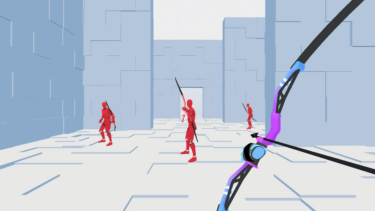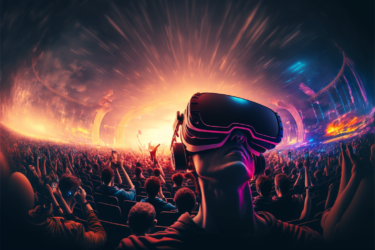The VR pioneer Jaron Lanier warns of a future where we live in virtual reality. Is the fear justified?
In the 1980s, Jaron Lanier founded VPL Research, the first company to commercialize VR headsets and applications, and he popularized the term virtual reality. On the day the Apple Vision Pro was launched, Lanier published an article in the New Yorker that went largely unnoticed by the VR community.
In his article, Lanier looks back on his years at VPL, describes the bright and dark sides of the technology as he sees them, and poses the important question of what role virtual reality might one day play in everyday life.
He rules out gaming as a formative VR application because “gamers like to be bigger than the game, not engulfed by it”. According to Lanier, virtual reality shines when it is an active experience that is shaped by the user rather than the other way around, and when it enhances the appreciation of real life rather than trying to replace it. In the worst case, VR “could agitate and depress people even more than the little screens on smartphones”.
“Living in VR makes no sense”
VR headsets are increasingly marketed as something that can be used for everyday purposes. But Lanier has always believed that VR sessions make the most sense, “when they accomplish something specific and practical that doesn’t take very long, or when they are as weird as possible.”
Towards the end of his articles, Lanier writes:
VR dystopia is a long way off
Lanier’s question about the significance of VR in our everyday lives is an important one. But we don’t have to worry about it replacing life, at least not any time soon.
For one thing, VR headsets are still too clunky and heavy for people to want to wear them all day, or even for more than an hour at a time. I am a VR enthusiast and rarely spend more than an hour in VR, and I agree with Lanier that short, intense VR sessions are best. If the last decade of VR hardware development is any guide, it will be a long, long time before devices are small and light enough to be fully mainstream and worn regularly by most people, if ever.
Second, virtual reality is a technology that integrates your body into the experience at a fundamental level and becomes more powerful the more you move. This is a big difference from regular computers, consoles, smartphones, and tablets. Many people use VR headsets for fitness, and I recently started playing virtual reality in a nearby forest. Apple may be marketing Vision Pro as a spatial computer and media player that’s primarily used in a seated and passive position, but it won’t stop there.
What about mental and creative activity? There are good reasons to believe that users will one day be able to create their own worlds and experiences more easily than ever before, and that virtual reality will be the ideal medium for creating such content and sharing it with others.
The Meatverse beats the Metaverse
The article gives me the impression that Lanier’s knowledge of the current state of the art and the use of VR is mostly based on hearsay and not on personal experience. This is supported by the fact that he devalues VR gaming and doesn’t even mention the creative and social side of the medium (VRChat!) or fitness applications.
But at the same time, his words resonate with me and evoke strong feelings. I mean his plea that VR should enrich life, not replace it. That’s exactly how I see it.
His article should not be dismissed as cultural pessimism. It was written with an eye to the future, not the present. It’s possible that in fifty years we’ll be spending a lot of time in ultralight headsets, and that warrants the question of what the technology will do to us.
I’ve already written about why I prefer the Meatverse to the Metaverse, and I don’t expect my opinion to change as long as I have a functioning body. Occasionally, I stay in VR for two hours or more because I find it so engrossing. But thereafter, I’m usually happy and breathe a sigh of relief when I take the headset off my face, and I am back in the real, beautiful, flawed world of ours.
After a long VR session, I sometimes feel like I’ve eaten at a fast-food restaurant instead of having a nutritious meal. My stomach is full, but my body feels cheated. VR can flood me with stimuli, but intuitively, I know that this reality is a sham, that something substantial is missing, whether it be touch, smell, or just the “mysterious physical stuff” that Lanier talks about. I trust that feeling. It keeps me grounded in this world.
You can read Jaron Lanier’s article in the online edition of the New Yorker.
Source: Mixed News







